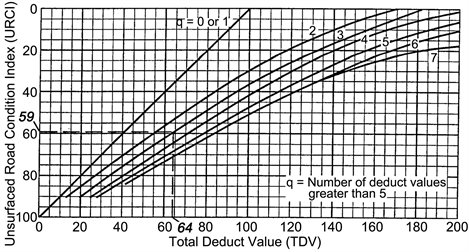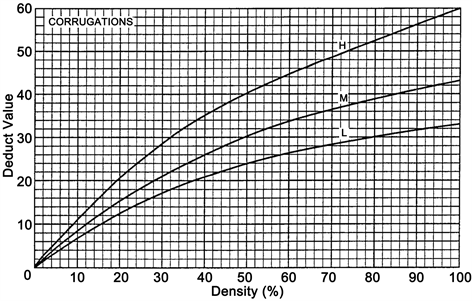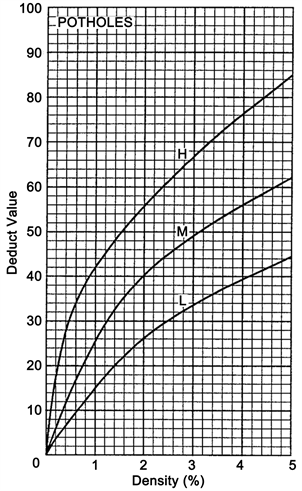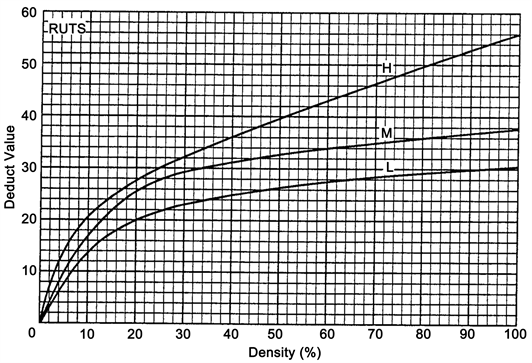Assessing Gravel Roads Condition to Examine Trends and Behaviors of Gravel Roads in Rural Areas in Kyela District ()
1. Introduction
In Kyela district, the total length of the roads in Tanzania Rural and Urban Roads Agency had 514.59 kilometers (NRCC, 2019); out of this road length 441.42 kilometers were earth, 69.83 kilometers were gravel, and 3.34 kilometers were paved roads. Based on the above data, road statistics provided by the Tanzania Rural and Urban Roads Agency Kyela district indicate that in 2020, about 83% of the total rural road network conditions in the district were classified as fair to poor and only 17% were in a good condition, which is the main reason for assessing the gravel road condition to examine trends and behaviors of gravel roads in rural areas on three gravel study roads in the Kyela district. Below Table 1 shows a road class category of road networks and Table 2 shows a road surface type of road networks in the Kyela district.
Gravel roads are considered one of the critical elements of constructed transportation infrastructures. The gravel road structure includes the subgrade and the gravel-wearing course, which carry little traffic (MoWT, 2016). They are used daily to facilitate the functioning of communities and social service delivery (Aleadelat et al., 2018). In addition, these unpaved roads facilitate up to 90% of the total mobility in inland regions in developing countries (Chakwizira et al., 2014). Few of these gravel roads have acceptable riding qualities. If periods of wet weather and high traffic volumes coincide, damage to gravel roads is very severe. However, during the rainy season, even at relatively low traffic gravel roads often become impassable (MoWT, 2016). Improving and maintaining these gravel roads is legally the responsibility of the various local agencies in the nation.
During the literature study, it was observed that a common problem associated with gravel roads is the deterioration of the surface. As ascertained by (Skorseth, 2000), factors such as traffic volume, proper design of road cross-section, quality of gravel materials, appropriate and proper use of equipment, and proper application of material and skilled personnel determine the rate and level of deterioration of gravel roads. Observation of the requirement of these factors drives increases the performance of the gravel road, riding quality, and satisfaction to road users. However, associated findings suggest that such problems require site-specific analysis and interpretation of causalities (Fu et al., 2010).
![]()
Table 1. Roads class category of roads network in Kyela district.
Source: Tanzania rural and urban roads agency Kyela district office (2020).
![]()
Table 2. Roads type of roads networks in Kyela district.
Source: Tanzania Rural and Urban Roads Agency Kyela district office (2020).
Having both positive and negative effects, there was a debate on which causes of the roads can potentially affect the condition of unpaved roads.
2. Literature Review
The Tanzania Road Manuals defines gravel road pavements as a road design that has Annual Average Daily Traffic of less than 300 at the time of construction (TZ-MoW, 1999). Also (Hamza et al., 2018) defined gravel roads are roads that consist of natural subgrade soil, embankment, and gravel at the top. The natural subgrade soil is the existing local soil and is generally grubbed between 0.2 m to 0.4 m and well graded. The embankment is that layer constructed above the subgrade and constructed from local borrow pits. The top gravel layer is the surface layer with a height of 0.15 m to 0.25 m (Hamza et al., 2018). Types of equipment required to construct the unpaved road are motor grader, compactor, excavator, bulldozer, dump truck, water bowser, Loader, and low bed (Hamza et al., 2018). A gravel road is surfaced with a layer of gravel material that is stronger than the natural in-situ soil. It has been reported by (Walker et al., 2002); that a minimum of 1.5 to 2 inches of gravel surfacing is generally necessary to be considered a gravel road. (Pearson, 2012) found that gravel roads have a designed layer of imported material, which is typically constructed to a specified standard and width providing an all-weather surface. Figure 1 shows a typical gravel road.
Gravel roads are typically made from a mixture of natural or native materials or gravel and fine gradients, such as silt and clay which are used to increase the cohesion of the gravel roads. The most commonly used material found in gravel roads is aggregate. It reduces the stress of wheel load on the subgrade material
![]()
Figure 1. Typical gravel road; study road (2021).
and provides driver comfort. It also helps to reduce the formation of sediment. Road aggregate deteriorates over time due to traffic, weather, and material quality (Rhee et al., 2018). Gravel material is a combination of three types of materials of different sizes which are stone, sand, and fines. Good gravel requires a certain percentage of stone to carry loads of vehicles, especially during the wet season, a percentage of sand-sized particles to fill the voids between stones and give stability, and a percent of plastic fines to combine together the stones and sand to make firm gravel surface to shade water (Skorseth, 2000). Proper gradation of gravel materials leads to good quality gravel. As ascertained by (Mwaipungu, 2015), factors that contribute to good gravel are particle size distribution and cohesion which can range from very fine particle sizes up to about 40mm. Too high a percentage of large particles (stones) will result in poor riding quality and make the maintenance work difficult. On the other side, the fine particles should have good plasticity to provide a bond with larger particles when dry but high plasticity is not recommended because will make the road slippery and impassable during the wet season. Real quality can only be determined by testing. To determine the quality of gravel, soil materials tests should be conducted in accordance with the locally available specification manuals. However, the knowledge of the past performance of the locally available materials on gravel roads can be used as selection criteria for gravel material. As stated in the Tanzania Pavement Material and Design Manual the deviation from the provided standard can be done by an experienced road engineer, if necessary, to take advantage of marginal gravel sources based on the proven past performance on gravel roads (TZ-MoW, 1999).
Methods of Assessing Gravel Road Condition
Many studies have attempted to assess road conditions using different methods. In reviewing the literature, Gravel Road assessment methods are mostly manual and dependent on visual surveys or actual measurements of road surface conditions (Huntington & Ksaibati, 2015). In the use of visual observation and physical measurement, the focus of this study was to assess the gravel road condition to examine trends and behaviors of gravel roads in rural areas. The trends and behavior of gravel roads were examined by firstly identifying a measurable consistent index for gravel roads known as the Unsurfaced Road Condition Index (URCI) and the apparent surface distresses and thereafter, depending on the actual measurement examining the severity and extent of each distress related to gravel roads in each study road. Then, using a deduct value (total deduct value (TDV) and Cumulative deduct value (CDV) for each distress type, an overall URCI, on a scale from 1 to 100, was calculated.
3. Methodology
3.1. Study Area
Kyela district covers an area of 1322 km2 and is located in the southeastern part of the Mbeya region in Tanzania. Latitudinally the Kyela district is located between 9˚25' and 9˚40' South and longitudinally is located between 33˚40' and 30˚00' East. Boarding Kyela districts are Rungwe, Makete, and Ileje districts in north and north-east, and east and west respectively. The south and southwest of the district form a border with Malawi. The Livingstone Mountain Range forms a prominent feature separating Kyela and Makete districts. Two main seasons exist in the Kyela district area, the dry season which takes from June to November, and the rainy season which begins in November and ends in April with a short period of reduced rains in May. The district has a warm and humid climate with a mean daily temperature of 23˚ (Wilfred, 2016). In this study, Tanzania Rural and Urban Roads Agency had been chosen as a study area. In the year 2020, the Tanzania Rural and Urban Roads Agency Kyela constructed some of its networks to gravel standard including the roads under study as shown in Figure 2. The selection of the gravel roads test section for the study was based on the newly constructed district gravel roads. Therefore, at the beginning of the study, the study roads shown in Table 3 were new. The roads' names and lengths are shown in Table 3.
![]()
Table 3. Research roads for the study (Source: Tanzania rural and urban roads agency Kyela (2020).
![]()
Figure 2. Map of the study area and selected gravel roads. Source: Google earth map (2021).
3.2. Methods
Data collection, in this study, used the field measurement method to provide information about the gravel road condition by characterizing gravel road distress. This method, each distress is measured and reported based on a certain scale and then use of specified graphs to calculate a few parameters named as deduct values and then use of an equation to calculate URCI. Descriptive analyses were conducted to examine trends and behaviors of gravel roads.
The density for each distress was calculated as follows:
Density = (Amount of Distress/Area of Sample Unit) × 100
The deduct values were measured using the curve given in the corresponding distress appended as Appendix.
The total deduct value was calculated by adding all the deduct values.
Unsurfaced Road Condition Index (URCI) = 100 − CDV
CDV: Corrected Deduct Value read from corrected Deduct − value curves
3.3. Data Collection
Actual field data were collected from selected three gravel roads in Tanzania Rural and Urban Roads Agency Kyela district in the year 2021 from January to December. This included soil material tests and gravel road distresses.
3.4. Road Materials
In this study, gravel materials samples were collected on the constructed road surface along the road section. Three samples at an interval of four months were collected and tested in the soil material laboratory. The aim of conducting tests was to assess the quality of the materials used for roadworks in the studied road sections. The gravel material tests conducted were soil classification which includes particle size distribution and Atterberg limits and soil strength which includes Compaction and California Bearing Ratio (CBR) with the three-point test BS 1377. Gravel material laboratory tests to determine the characteristics of gravel materials were conducted according to Tanzania`s Central Materials Laboratory (CML) procedures, referred to in the (TZ-MoW, 2000). These tests were conducted at TANROADS Mbeya regional materials laboratory and the results were summarized in Table 4 and Table 5. Moreover, Tanzania road guidance manuals PMDM specify a combination of parameters that should be satisfied during the selection of gravel materials for wearing layers for gravel roads in Dry and moderate climate zones. Table 6 shows the required combination of parameters for the wearing layer for gravel roads.
3.5. Gravel Road Condition
The road condition distresses of each study road were recorded on a gravel road assessment form as shown in the appended index 1. In this study, the parameters considered were rutting, potholes, and corrugation from which distress type, severity level, and extent were collected and used to calculate road condition indices. For analysis of the condition of the road on the gravel road, the URCI method for rating the surface condition was adopted. Distress measurement procedures were engaged, the research roads were divided into sections and sample units were inspected and distresses were measured. Once this has been accomplished road condition data were obtained and the Unsurfaced Road Condition Index (URCI) of each section was determined as shown in Table 7. The appearance of gravel road distress is varied.
![]()
Table 4. Summary of soil particle size distribution, Grading Modulus (GM), and Grading Coefficient (GC) for gravel samples from studied roads.
![]()
Table 5. Summary of strength Tests (Optimum Moisture Content (OMC), Maximum Dry Density (MDD), California Bearing Ratio (CBR), and Soil class for Soil Samples from studied roads.
![]()
Table 6. Material requirements for gravel wearing source (Source PMDM Table 11.1).
![]()
Table 7. Road condition-URCI (%) data for research roads, 2021.
4. Results and Discussion
4.1. Road Materials
The quality and characteristics of gravel material samples collected on the constructed road surface along the road section in accordance with the locally available specification manuals were analyzed in different parameters such as Soil particle size and Strength tests. The specifications are given by Tanzania guidance manuals, Standard Specifications for Road Works (TZ-MoW, 2000). and Pavement Materials and Design Manual (TZ-MoW, 1999). Under soil particle size analysis results show that two samples taken in August and December 2021 were out of the recommended limit under the grading coefficient (GC). It was 38.76 and 46.38 while the recommended range is 16 - 34. And one sample taken in April was somehow within the recommended limit under the grading coefficient (GC), the result was 15.32. Plasticity index value on all studied roads in April was 25%, August was 23% and December was 21% which conform to gravel wearing course materials such as G3, G7, and G15 but on G25 were not specified. Under shrinkage, analysis results show that all samples taken in April, August, and December 2021 have shrinkage product values, not within the recommended range of 120 - 400. It was 489, 620.4, and 476.72 respectively. On the gravel material strength test, only two samples are within the recommended specification of CBR of 25%, whereby one sample is out of the limit. It was 33, 33 and 23 respectively. Gravel material test results indicated that some of the gravel materials used on the road surface are varied and had low quality.
4.2. Gravel Road Condition
The analysis of the data for road conditions was carried out based on the URCI finding each road condition distress as the parameter of analysis. As shown in Figures 3-5 present a list of identified and assessed distress in each study road. Overall, the study road had excellent to poor distresses deteriorating the road
![]()
Figure 3. Trends of road distress on Muungano - Njisi road (2021).
![]()
Figure 4. Trends of road distress on Bujonde - Lubaga road (2021).
![]()
Figure 5. Trends of road distress on Itope - Ngonga road (2021).
conditions. From Figures 3-5, it can be noted that from January to February Road distresses of these roads were in excellent condition followed by a slight recovery between March and May. These increases may be attributed to the decrease in soil particle size and strength of road material as compared to January and February Road material. Between June and September, another rapid decrease in road distresses is observed followed by a nearly constant value. It then falls rapidly from October and December where it again maintains a nearly constant value till December. During this period, road material is nearly constant and very poor road material.
5. Conclusion and Recommendation
In this study, the road conditions of studied roads were determined by assessing the distresses and road materials factors. Visual observation and physical measurement methods were used to identify, assess and rate the conditions of gravel roads. The results show that road distresses and road material varied which results in variation in road conditions. It can be concluded from this study that: Road conditions determined on the studied roads by the behavior of the road material vary significantly within a year. It takes only two seasons to exist in the Kyela district for the road condition to fall from Excellent to poor distress. This information can be crucial in Planning for unpaved road maintenance; the drop in road condition index over time was attributed primarily to lack of maintenance, and poor road material.
Based on these results, this study recommends road agency to improve the current condition by avoiding the use of poor road materials in order to reduce surface deterioration associated.
Acknowledgements
I, the author, would like to acknowledge the contributions of my supervisors Dr. Mwajuma I. Lingwanda and Dr. Gislar Kifanyi for their constructive response to the research.
Appendix



